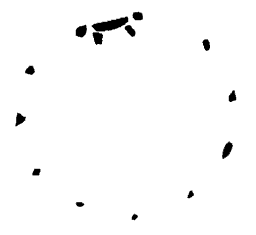 |
Science Frontiers ONLINE No. 126: Nov-Dec 1999 |
|
|
Ancient Stage Design
In past issues of SF we have reported on the acoustical properties of rock-art sites (SF#83 and SF#123) and megalithic chambers (SF#102). This ancient recognition and use of the properties of sound to impress gatherings of people is rather remarkable for 4,000-5000 years ago. But we must be even more appreciative of megalithic-age talents when we discover that they also wedded visual effects with acoustical engineering when staging rituals and ceremonies. In effect, they were pioneering the design of auditoriums and church interiors.
This marriage of architecture and sound was studied at two megalithic sites by A. Watson and D. Keating. Since we have previously attended to the acoustics of stone chambers, we will bypass their work on the huge chambered cairn called Camster Round and focus on the recumbent stone circle (RSC) called Easter Aquorthies near Aberdeen, Scotland.
That RSCs are not ordinary stone circles is seen in this quotation from the paper by Watson and Keating.
"Recumbent stone circles possess a number of characteristic features that have primarily been interpreted in visual or aesthetic terms. For example, their standing stones tend to be graded in height towards the southwest, creating a visual focus for the the large recumbent block itself, which lies between the two tallest stones. The recumbent at Easter Aquorthies is elaborated by two stones which project from its inner face to form an alcove. The stones in the circle also appear to have been chosen for their colour."
Casual observers at Easter Aquorthies has had often remarked on curious echoes and reverberations heard inside the ring of stones. It seemed that the recumbent stone with its flankers and projecting stones were focussing sounds towards occupants of the ring.
 | Easter Aquorthies is a recumbent stone circile with two sound-focussing stones projecting inwards. Circle diameter: about 10 meters. |
Watson and Keating decided to survey the circle and its surroundings acoustically, using an audio amplifier placed in the alcove. Measurements confirmed the focussing the sounds within the ring but did not record the subtle reverberations detected by humans. Sounds from the amplifier were almost totally confined to the ring. It seems that Easter Aquorthies was designed deliberately to enhance the acoustical and visual effects experienced by an audience within the ring.
(Watson, Aaron, and Keating, David; "Architecture and Sound: An Acoustic Analysis of Megalithic Monuments in Prehistoric Britain," Antiquity, 73:325, 1999.)
Comments. There are about 70 recumbent stone circles in Britain, mostly in northeastern Scotland. They are characterized by the single recumbent stone, which almost invariably appears in the southwestern part of the ring. No obvious astronomical phenomena, such as winter-solstice sunsets, can be seen over the prostrate stone, so its placement is an enigma. In addition to this mysterious recumbent stone, almost all RSCs have either 10 or 11 accompanying standing stones. These two numbers may have had some mystical significance. The recumbent stone suggests an altar, perhaps a sacrificial one. In this regard, the bones of many young children have been excavated at the RSCs! For more on the mysterious RSCs, see MSH8 in our new catalog Ancient Infrastructure.